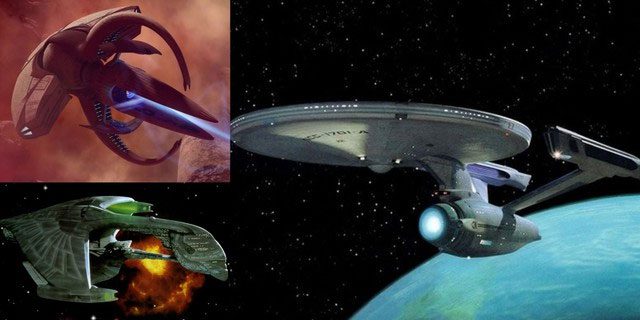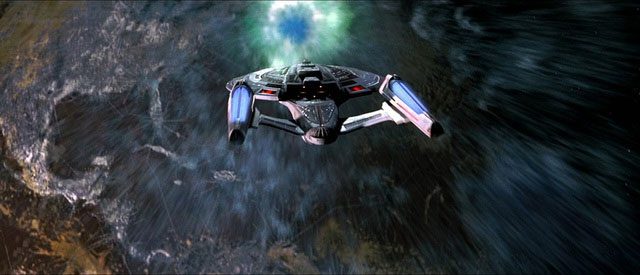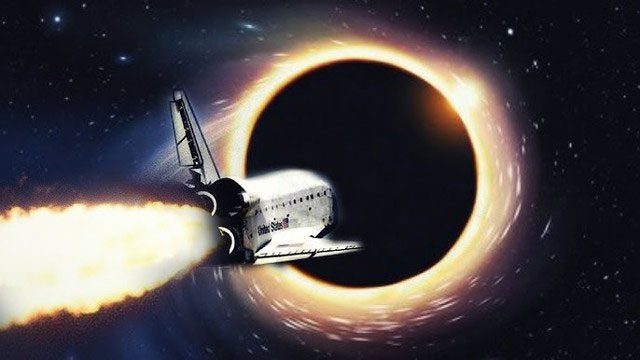Warp Drive Technology, also known as Faster-Than-Light (FTL) Propulsion, has always been a familiar concept in the realm of science fiction, from literary works to classic films like Star Trek.
Warp Drive was first mentioned in the science fiction novel Islands of Space by author John Campbell. However, it wasn’t until the emergence of Star Trek that the term truly gained popularity. In Star Trek, Warp Drive is a technology that allows spacecraft to traverse vast distances in space in a short time by creating a bubble of space and sliding through the universe at speeds faster than light. Thanks to its attraction in popular culture, this concept has gradually become a symbol of humanity’s dream of conquering space.

Warp Drive is also known as Faster-Than-Light propulsion.
Scientifically, Warp Drive is currently only a theory and has yet to be proven in practice. While there have been certain advancements in research, many complex issues related to physics and energy remain unresolved. Recently, two researchers, Remo Garattini and Kirill Zatrimaylov, conducted an intriguing thought experiment: they examined what would happen if a ship using Warp Drive attempted to enter a black hole. Their results not only provide theoretical insights but also hint at the possibility of creating smaller versions of Warp Drive in the future.

Warp Drive spacecraft could exist inside what is known as a Schwarzschild black hole.
Garattini and Zatrimaylov hypothesized that a Warp Drive spacecraft could exist within what is known as a Schwarzschild black hole – a type of black hole that is uncharged and non-rotating. This could occur if the ship crosses the event horizon of the black hole at a speed slower than the speed of light. Theoretically, the gravitational field of the black hole could reduce the amount of negative energy required to maintain the operation of Warp Drive. This could allow the ship to pass through the black hole without being crushed, an extremely appealing idea for the scientific community.
In reality, the mathematics behind this idea suggests the potential to create smaller Warp Drive spacecraft in a laboratory environment. If this becomes a reality, we could be closer to validating the theory of Warp Drive and even opening new doors for space travel.

Creating a Warp field requires an enormous amount of energy.
Warp Drive, fundamentally, is a mechanism that enables a spacecraft to create a bubble of space, allowing it to slide through space at speeds faster than light. While this sounds straightforward, the implementation is an entirely different story. The first and foremost issue is energy. Creating a Warp field requires an enormous amount of energy, far beyond what humanity can currently produce. This energy source not only needs to be substantial but must also be generated from a form of exotic matter, which is not clearly defined in modern physics.
Initial research into Warp Drive, such as that by Mexican physicist Miguel Alcubierre in 1994, indicated that creating a space bubble for moving a ship could require energy equivalent to the mass of a planet. Furthermore, maintaining this bubble would also require negative energy—a challenging and unclear concept in physics.

The Schwarzschild black hole is the perfect choice for these theoretical experiments.
Black holes are known as regions in space where gravitational forces are so strong that nothing can escape, not even light. This creates an intriguing research environment for testing Warp Drive theories. The Schwarzschild black hole, with its non-rotating and uncharged characteristics, is the ideal candidate for these theoretical experiments.
By combining equations that describe black holes with those of Warp Drive, Garattini and Zatrimaylov discovered that it is possible to embed a Warp Drive into the outer region of a black hole. The gravitational forces of the black hole not only affect the energy conditions necessary to create Warp Drive but could also help reduce the amount of negative energy required to maintain the space bubble. This opens up the possibility of conducting experiments to create smaller versions of Warp Drive in controlled environments.

One notable issue is the change in entropy of the black hole when a Warp Drive spacecraft enters.
Although the research by Garattini and Zatrimaylov opens up new prospects, many questions remain to be addressed. One notable issue is the change in entropy of the black hole when a Warp Drive spacecraft enters. If the space bubble moves slowly and is much smaller than the event horizon, it could increase the entropy of the black hole. However, if this bubble is completely absorbed by the black hole, it could decrease the mass and entropy of the black hole, leading to unpredictable effects.

This technology may not be realized in the near future.
Warp Drive remains a challenging concept, and this technology may not be realized in the near future. However, theoretical research like that of Garattini and Zatrimaylov provides valuable insights into how we can approach and test these concepts. If advancements in quantum physics and our understanding of black holes continue to develop, we may see Warp Drive technology shift from fiction to reality.
Warp Drive is not just an idea that stimulates the imagination; it also symbolizes humanity’s ability to transcend its limits. In the future, we may witness significant breakthroughs in the research and development of this technology, ushering in a new era of space travel and exploration of the universe.





















































